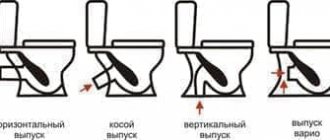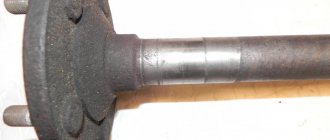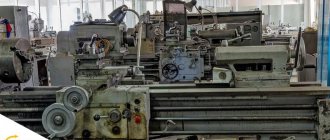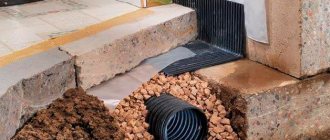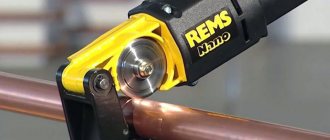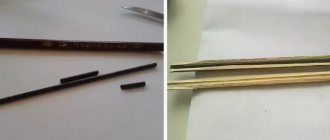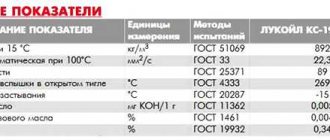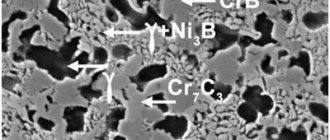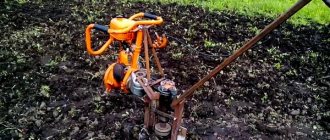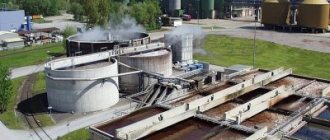Bookmarked: 0
Wear is the process of depreciation of material means of production, which accompanies the loss of their economic and technical quality. There are three groups of wear. Physical wear and tear is the deterioration of the condition of premises, equipment, transportation facilities, and technologies. Obsolescence is a loss in the quality of production equipment, which is caused by a long operational period, during which the equipment is still functioning, but does not correspond to updated technologies. And economic wear and tear - when existing means of production decrease in price under the influence of economic factors.
Depreciation (economics) is the depreciation of material production long-term assets (fixed assets), such as transport, equipment, buildings, which are accompanied by the loss of their economic and technical properties.
There are three types of wear:
- Physical wear and tear is the wear and tear of property, which is associated with a decrease in its value as a result of the loss of its own physical properties (appearance, strength, etc.) due to natural physical aging when using this property;
- Functional (moral) wear and tear is the partial loss of use value of fixed assets due to the reduction in the cost of their reproduction or due to lower productivity in comparison with new ones;
- Economic depreciation is a decrease in the value of property due to changes in external factors (environmental, economic, political, and so on).
Physical wear and tear is found using the formula:
Depreciation = Asset service life / Asset standard service life
What is wear and tear? Description and definition of the concept.
Let's take a closer look at what wear means.
Every person has known for a long time that everything around them, unfortunately, is wearing out. This applies to buildings and equipment. At the same time, it is necessary to replace real estate items and equipment not only when they fail, but also when more modern equipment becomes available. This will make it possible to save large sums on the repair of equipment and old machines and achieve safer and faster production. Specialists in the field of economics and accounting are familiar with these processes.
Types of wear
In accounting, this concept is closely intertwined with depreciation. Some people consider the concepts to be identical, but there is a big difference. Depreciation reflects the physical side of the production process, and depreciation reflects the economic side, resulting in a redistribution of the cost of deformations to allocate funds for the purchase of new equipment and the cost of manufactured products. The first can become obsolete in different ways, which directly affects wear and tear. Types of wear are classified according to various criteria. There is functional and physical wear and tear. Each of them is also divided into groups.
Physical deterioration
We are talking about a direct loss of original properties during the operation of objects. Wear can be represented as partial or complete. In the latter case, the equipment must be restored through repairs. In other situations, only use or disposal as spare parts is permissible.
There is also a more detailed classification of physical wear and tear:
- the first type - the equipment wears out as a result of proper operation;
- the second type - the culprit for damage to buildings and equipment is violation of the rules of use, nature, and so on;
- continuous - gradual loss of original properties due to the use of equipment;
- emergency - sudden (its common cause is hidden wear).
The types of wear described above can be determined not only for the entire piece of equipment. But also for its components. In terms of meaning, the types of physical wear and tear do not differ much from moral wear and tear.
Functional wear
If with the physical everything is quite transparent, then in the situation with the functional it is necessary to clarify that we are talking about reducing the attractiveness of machines as a result of producing equipment using technologies. Functional wear is divided into the following types: Partial - the equipment becomes unprofitable to use for the full production cycle, but it may still be suitable for some specific operations. Complete - wear and tear causes the equipment to no longer be used for production. It is only suitable for use as spare parts or for disposal.
Functional wear has another classification - based on the reasons for its appearance. It distinguishes the following types: Obsolescence - the appearance on the market of more advanced equipment used similar in production.
Types of obsolescence are caused by operating or excess capital costs. Technological wear and tear is the emergence of more advanced technology for manufacturing products. It can be reduced due to the composition and amount of equipment.
Economic wear and tear
It is not only time and nature that influence the types of wear. The development of the economy and its indicators also affects the depreciation of technology. Wear is directly related to factors such as:
- decrease in demand for products manufactured by the enterprise;
- inflation.
There is a need to purchase raw materials at high prices, to raise workers’ wages, such costs appear, but product prices do not increase in an amount corresponding to the costs.
Increased competition
An increase in interest rates on loans for organizations that are issued for certain purposes (for example, the purchase of new equipment).
Changes in commodity markets.
Introducing restrictions on the use of certain models of equipment for environmental reasons.
Both different groups of equipment and real estate can lose their properties and become obsolete. Every business has its own comprehensive list of where wear and tear occurs. Types of wear also have their own classification.
Wear detection
It is not difficult to understand what wear and tear is. This is the loss of the original properties of the object. This happens for many different reasons and their combination: natural, temporary, economic and technological. Progress and human influence have no less influence.
In accounting, this concept is closely intertwined with depreciation. Some people consider the concepts to be identical, but the difference is significant. Depreciation reflects the physical side of the production process, and depreciation reflects the economic side, that is, the redistribution of the cost of deformations to the cost of production and the allocation of funds for the purchase of new equipment.
The latter can become obsolete in different ways, which directly affects wear and tear. Types of wear can be classified according to different criteria. There is physical wear and functional wear. Each of them is also divided into groups.
Types of real estate wear and tear
Compliance with instructions and service life affect the condition of the instruments. If they are used incorrectly or actively, they are more susceptible to deformation and lose their original properties. Types of tool wear are different: formation of gouges; surface deformation; spalling; cracks; plastic deformation; growths of different nature. Each of them has its own causes and methods of eliminating damage. Measures taken to combat emerging tool wear help to increase its service life and perform better work.
As a result of constant use, the shape, size and integrity of equipment parts may change. This happens for many reasons, which make it possible to distinguish the following types of wear of parts:
- corrosion-mechanical;
- molecular mechanical;
- mechanical.
Excellent prevention is the timely lubrication of parts, regardless of whether the equipment (equipment, machines, machines, etc.) is in a warehouse or in operation.
Any structure loses its strength over time. It is possible to extend life both through proper operation and through reconstruction or timely repairs. Types of deterioration of buildings are as follows:
- Physical - the influence of external factors and time on an object.
- Functional - when the building does not meet the requirements for this type of activity and structures.
- External - the influence that turns out to be external economic factors.
Objects are divided into elements of two categories: subject to rapid wear and tear and long-term. The first group includes walls, and the second group includes pipes, roofs, and so on. The types of wear and tear on real estate are the same regardless of the nature of its use and location. The only difference is that in different climatic conditions physical wear and tear can occur faster or slower. There are also not only types of equipment wear, but also ways to determine equipment deformation. Let's look at them.
Physical deterioration
We are talking about the direct loss of the original properties during the use of objects. Depreciation can be represented as complete or partial. In the latter case, the equipment must be restored through repair. In other situations, only write-off or use as spare parts is permissible.
There is also a more detailed classification of physical wear and tear:
- first type - equipment wears out as a result of proper operation;
- of the second kind - nature, violation of the rules of use, etc. become the culprit for damage to equipment and buildings;
- continuous - gradual loss of original properties due to the use of equipment;
- emergency - sudden (hidden wear is a common cause).
The types of wear described above can be determined not only for the piece of equipment as a whole. But also for its constituent parts.
In terms of meaning, the types of physical wear and tear are not particularly different from moral wear and tear.
Ways to determine wear
Types of wear and tear are often defined as both moral and physical, without a more detailed division into subgroups. The following methods will help determine their degree:
- operating profitability is the ratio of the reduction in net income to the highest possible;
- in terms of lifespan - this is the ratio of the standard period of operation to the time of use makes it clear by what percentage the equipment loses its original properties;
- observation is a direct method for determining wear (various tests);
- direct monetary measurement is the ratio of the cost of repairs to the price of a new unit of equipment;
- a comprehensive assessment of technical condition is determined using a special wear scale.
Each of the methods more or less accurately reflects the state of objects, but in practice the direct method is used much less frequently than the others.
Economic wear and tear
Not only nature and time influence types of wear. The economy, its development and indicators also affect the depreciation of technology. Wear is directly related to factors such as:
- Decrease in demand for products manufactured by the enterprise.
- Inflation. There is a need to buy raw materials at higher prices, raise workers' wages, and other similar costs arise, but prices for products do not increase in an amount corresponding to the costs.
- Increased competition.
- An increase in interest rates on loans for organizations issued for certain purposes (for example, the purchase of new equipment).
- Changes in commodity markets.
- Introducing restrictions on the use of certain models of equipment for environmental reasons.
Both real estate and different groups of equipment can become obsolete and lose their properties. Each enterprise has its own complete list of where wear and tear occurs. Types of wear also have their own classification.
Accounting methods
As can be seen, a wide variety of wear types can be classified and identified. Depreciation on them is calculated in several ways. This:
- reducing balance method;
- linear;
- proportional to the volume of products produced;
- by the sum of years of useful use.
All these methods are used in enterprise accounting, depending on what the company does and what volume of production it has. In the activities and life of every enterprise, great attention must be paid to wear and tear. It is thanks to the correct use of real estate and equipment, timely replacement and repair that the company receives quality goods at the least necessary costs.
We briefly reviewed wear, its types, methods of determination and accounting. Leave your comments or additions to the material.
Functional wear
If with the physical everything is quite transparent, then in the case of the functional it should be clarified that here we are talking about a decrease in the attractiveness of machines as a result of the production of equipment using new technologies. Functional wear is divided into the following types:
- Partial - the equipment becomes unprofitable to use for the full production cycle, but it may still be suitable for some specific operations.
- Complete - wear and tear leads to the fact that the equipment cannot be used for production purposes. It is only suitable for disposal or use as spare parts.
Functional wear also has another classification - based on the reasons for its occurrence. It distinguishes the following types:
- Obsolescence is the appearance on the market of more advanced equipment similar to that used in production. Types of obsolescence are caused by excess capital or operating costs.
- Technological wear and tear - the emergence of more advanced production technology. It can be reduced due to the number and composition of equipment.
Along with its advantages, the score-index integrated assessment has disadvantages.
It is not able to properly assess reliability, impact on the environment, safety, development period and duration of possible operation before obsolescence, appearance (aesthetics) and many other indicators, without which any definition of quality is incomplete. [p.149] Determination (assessment) of economic wear and tear. External (economic) wear and tear is expressed in a decrease in the functional suitability of real estate caused by negative factors external to it: the general decline of the area, poor location, etc. If physical and, to a certain extent, functional wear and tear can be eliminated by reconstructing or modernizing a building, then wear and tear from external influences is in most cases irreparable. It is traditionally calculated in two ways [p.201]
The physical characteristics of a property include dimensions, structural elements, quality of materials, wear and tear, appearance, environmental conditions, etc. Adjustments for physical characteristics require discussion of each point of difference. [p.113]
Physical wear Functional wear Wear from external influences (external or economic wear) [p.38]
If physical and, to a certain extent, functional wear can be eliminated by reconstructing or modernizing an object, then external wear, as a rule, cannot be eliminated. [p.40]
A way to measure external wear and tear is to analyze paired sales, when two comparable objects are sold on the real estate market, one of which has signs of external wear and tear, the other does not. The difference in prices will allow us to draw a conclusion about the amount of wear and tear from the external influence of the building being assessed. Another way to measure external depreciation is to determine the value of rental losses, measured using the gross rental multiplier. [p.40]
The efficiency of using construction machines largely depends on the proper organization of their operation, maintenance and repair. Operational maintenance means the supply of machines with fuel, lubricants and other operating materials, delivery or relocation of machines to construction sites (sites) and their storage at bases, and maintenance and repair means a set of works to maintain the technical condition of the machine, provided for in regulatory documentation. During the maintenance of machines, measures are taken to eliminate faults that are not failures and do not require replacement of components and parts; at the same time, during repairs of any kind, components and parts that are unfit for further use are replaced with new or restored ones. During the operation of construction machines, their parts and connections change the size and structure of the material, external and internal, visible and hidden defects appear in them, causing a decrease in power, the developed force on the working parts and the productivity of the machines. In such cases, they say that the machine is wearing out. Wear refers to the results of wear and tear. [p.81]
Yet the investment climate in the country remains generally unfavorable. Foreign investors are taking a wait-and-see approach. The factors preserving the unfavorable investment climate are as follows. Firstly, this is a significant external debt, amounting to more than $150 billion, i.e. its volume is now equal to the volume of GDP. As a result, over the next ten years, the country must annually pay its creditors from 15 to 20 billion dollars (excluding the agreement on debt restructuring to the London Club) - a task that is clearly beyond the capabilities of the Russian economy. All this puts a huge burden on the budget, which, after paying off the annual payments, essentially has no funds left for investment. Hence the obvious lack of effective state policy and the meagerness of state guarantees. Unworthy participation of the state in the investment process provides little incentive for private and foreign investors to finance the development of the real sector of the economy. Secondly, this is the behavior of natural monopolies, including their pricing policy. Since the state, through its economic policy, has transferred the burden of investment to the private investor, it is obliged to create conditions under which enterprises could earn money for investment activities. In this regard, one of the most important, but not yet resolved, tasks of state regulation is to prevent an increase in prices for products and services of natural monopolies and thereby an increase in costs in this part of the production costs of enterprises in the real sector. Solving this problem would help the latter to find additional sources of accumulation. But some natural monopolies block not only others’, but also their own investment policies. Thus, there is a downward trend in investment activity in the electric power industry in 1999. The share in this industry in the volume of investment in industry decreased compared to 1998 from 7.6 to 5.2%. Compared to 1990, investments in the electric power industry decreased by 2.2 times. As a result of underfinancing, physically and morally obsolete fixed assets continue to function; at the end of 1998, their depreciation in the electric power industry amounted to 48.3%. Their decommissioning cannot be compensated by the corresponding introduction of new capacities. To replace outdated equipment it is necessary in 1999-2001. annually commission a capacity of 7-8 million kW, while the average actual commissioning of energy capacity in recent years was only 0.3-0.4 million kW. [p.238]
Objective factors include the various influences of the technological process (tool wear), as well as the influence of the external environment associated with. mechanical, climatic and other influences. [p.61]
The principle of change. Both the real estate object itself is subject to change (for example, physical wear and tear), as well as all environmental factors affecting the value of the object mentioned above. [p.252]
All types of wear (physical, functional, external) are calculated. [p.266]
Determination of wear by this method is carried out by dividing it into three components - physical wear, functional wear and external wear. [p.273]
External wear and tear is caused by factors external to the property. Such factors are industrial enterprises in relation to real estate, seismic and environmental conditions, etc. [p.275]
External wear and tear may also be caused by competition in the local real estate market due to an oversupply of similar properties. [p.275]
External wear is only irremovable, since the amount of costs will always be greater than the increase in the value of the object. [p.275]
External depreciation is determined by the amount of rental losses measured using the gross rental multiplier (GRM). [p.275]
Therefore, external wear is equal to $8,333. However, it must be taken into account that part of the wear relates to the ground. [p.276]
External wear and tear can also be determined through paired sales analysis. Pairs must include salable properties, one of which is affected by external (economic) wear and tear and the other is not. The sequence of analysis is as follows [p.276]
The difference after adjustment is due to external wear. [p.276]
EXAMPLE OF EXTERNAL WEAR ASSESSMENT. The appraiser determined that two similar houses had been sold in the area under study, but one had an addition and the other did not. The first house without an addition sold for $60,000, and the second for $80,000. The appraiser also knows that the contribution of the addition to the value of the land is $10,000, and the value of the land for the addition is $5,000. Determine the external wear and tear, if the first house is located near the river, and the second near the highway. Calculation of external wear is presented in the table. [p.276]
This total value refers to the external wear and tear of the building. [p.276]
Selling price of a house without an extension 60,000 Difference in price 20,000 Contribution of an extension to the cost 10,000 Difference in value caused by external wear and tear 10,000 Cost of land (not worn out) 5,000 Loss of value due to external wear and tear of the building 5,000 [p.277]
Percentage of wear caused by external wear 8.33% (motorway) [p.277]
The lifespan method can be used either to calculate total wear and tear, including physical, functional and external wear, or to calculate only one type of wear. [p.278]
When calculating the cost of a hotel using the cost method, the replacement cost or replacement cost is first determined. By adding the value of business income to the value of replacement cost, the full replacement cost is obtained. Next, wear is determined (physical, functional and external). By reducing the total replacement cost by the amount of depreciation, the cost of the building taking into account depreciation is obtained. If we add to the latter the cost of the right to use the land and the cost of furniture, equipment and inventory, we can determine the value of the object. Finally, you can take into account the value of intangible assets. The cost method for valuing hotels is shown below. [p.379]
Depreciation of external improvement objects and other similar objects (0151 980 [p.331]
Deterioration of external improvement objects and other similar [p.482]
Deterioration of external improvement facilities and [p.134]
Depreciation of external 015 improvement objects and other similar objects [p.26]
If the organization has housing stock and improvement objects, depreciation on such objects is accrued once a year and is reflected in off-balance sheet accounts 14 Depreciation of housing stock and 15 Depreciation of external improvement objects and other similar objects. [p.58]
Wear and tear of external objects 980 [p.314]
Secondly, depreciation is considered as a decrease in utility as a result of factors external to the asset, such as technical obsolescence over time and inadequacy, i.e., the inability to produce what is demanded. Again, there are no long-lived assets for which a measure of technical obsolescence or inadequacy can be determined. It depends on factors such as the general development of technology in the industry and economic conditions, which cannot be assessed at short-term intervals. [p.285]
Obviously, the question of the essence and role of the concept of depreciation in modern accounting thought is very confusing. Depreciation (amortization) was characterized as a loss from physical wear and tear, as a decrease in utility as a result of factors external to the asset, as a decrease in value, as a process of allocating costs, as contributions to an asset replacement fund, etc. But wear and tear can't be all it is. This paragraph shows that none of the traditional concepts listed above can provide a satisfactory explanation of what the accountant does in the depreciation (amortization) process. [p.287]
In accordance with paragraph 17 of PBU 6/01 [31] for housing facilities (residential buildings, dormitories, apartments, etc.), external improvement facilities and other similar facilities (forestry, road management, specialized navigation facilities, etc.) etc.), as well as productive livestock, buffaloes, oxen and deer, perennial plantings that have not reached operational age, the cost is not repaid, i.e. no depreciation is charged. For the specified fixed assets and fixed assets of non-profit organizations, depreciation is calculated at the end of the reporting year according to the established depreciation rates. The movement of depreciation amounts for the specified objects is taken into account in a separate off-balance sheet account [p.193]
Depreciation is accrued for all types of fixed assets, with the exception of land and natural resources under conservation, housing and external improvement facilities, library collections, museum and artistic treasures, productive animals listed on the balance sheet of the enterprise. [p.470]
Physical wear and tear is the gradual loss of fixed assets of their original use value, which occurs not only during their operation, but also during their inactivity (destruction from external influences, atmospheric influences, corrosion). When completely worn out, existing assets are liquidated and replaced with new ones (capital construction or ongoing replacement of worn-out foundations - [p.141]
Debt of insolvent debtors written off at a loss (007) Depreciation of housing stock (008) Depreciation of external improvements and other similar objects (009) Other off-balance sheet accounts 950 960 970 980 [p.16]
Internal sources include depreciation (wear and tear), profit (accumulation fund), issue of shares and bonds, and external sources - credit, rent, leasing. In the current conditions, the issue of attracting external investment is key in solving the technical re-equipment of production. [p.334]
In our country, unfortunately, for many years the view of K. Marx prevailed, outwardly seeming to develop the approach (a), but leading to a completely different, erroneous interpretation of the depreciation process. Wear, wrote K. Marx, “is that part of the value that fixed capital, thanks to its use, gradually transfers to the product [K. Marx. Capital. - T. 2, p. 167]. This statement leads to misunderstandings, because it assumes a direct connection between depreciation and the operation of the item and the period of its wear. [p.84]
All underground gas, oil and petroleum product pipelines, despite insulating coatings and other measures to protect against corrosion, are subject to wear - gradual corrosive destruction of the metal and insulating coating under the influence of the environment. Ground structures are also subject to the destructive effects of internal and external factors. This necessitates scheduled preventive and emergency repairs of pipelines and equipment at pumping stations, compressor stations and oil depots. Therefore, during the transport and storage of oil, petroleum products and gas, many auxiliary processes are more complex and labor-intensive than the main production process. [p.33]
The phenomenon of detonation should be distinguished from uncontrolled self-ignition of the working mixture in the cylinders or the so-called glow ignition, which also leads to excessive fuel consumption and premature engine wear. In this case, ignition does not occur from an electric spark, but prematurely from overheated parts of the combustion chamber. Uncontrolled ignition is most often observed in highly accelerated automobile engines running on leaded gasoline with a high content of aromatic hydrocarbons. Glow ignition can occur both from heated metal surfaces and from carbon deposits in the engine. Its external signs are the same as those of detonation, although this phenomenon has nothing to do with detonation. The combustion process during glow ignition proceeds at normal speeds. However, glow ignition in the engine can simultaneously accompany [p.160]
Depreciation of fixed assets is a partial or complete loss of the technical and operational properties of fixed assets during operation, as well as under the influence of external conditions that affect fixed assets during operation or inactivity. Degree I. o. f. determined by the intensity and overall activity of exploitation, the quality of maintenance of fixed assets during operation, the qualifications of workers and other factors. [p.129]
The Atyrau oil refinery has been operating in the region since 1945. The plant is one of the region's largest taxpayers; its work affects the state of the region's economy. The moral and physical wear and tear of the main equipment at the plant, the low depth of oil refining do not allow the proper processing of valuable petrochemical raw materials, in connection with which the Government of the Republic of Kazakhstan adopted a resolution on the reconstruction of the Atyrau Oil Refinery through a government loan, co-financing of the Japanese and NOC KazakhOil in the amount $308.0 million USA. The implementation of the project will make it possible to create competitive products at the level of world oil refining standards and export them to foreign and domestic markets. [p.63]
Depreciation of fixed assets is determined for all types of fixed assets, regardless of the accrual or non-accrual of depreciation on them. The amount of depreciation for residential buildings, external improvement objects and other similar objects (local and road facilities) is taken into account in off-balance sheet account 010 Depreciation of fixed assets. [p.199]
Types of wear
The classification of wear today is quite extensive. So, for a complete understanding, it is advisable to initially review the information briefly, and then delve into the details. The aging category is divided into actual wear and tear, which is accompanied by a change in the characteristics of the object; functional wear and tear, which is caused by the development of new technologies; external wear caused by external factors. The first two types of depreciation of fixed assets are classified into removable and irreparable. In addition, the first group is divided in accordance with the reasons that caused the aging of equipment into wear of the first type (accumulated as a result of operation at normal rates) and wear of the second type (accumulated due to accidents, natural disasters and other negative factors). Judging by the time of occurrence, then in the same group it is customary to distinguish between continuous (technical and economic indicators decrease gradually) and emergency (instantaneous in time of implementation, for example, as a result of a cable breakdown or an industrial accident) wear.
The second group, that is, this type of depreciation of fixed assets as functional, is classified into moral (the main reason in this case is the change in the characteristics of products similar to this one, as well as the reduction in the cost of their production) and technological (the key reason is the change in the cycle in which, according to tradition, This object is included in technological terms) wear and tear. In turn, obsolescence, based on cost items, changes in the structure of which led to wear and tear, is divided into aging due to excess capital expenditure; obsolescence due to extremely high operating costs; aging caused by low levels of ergonomics and ecology.
It is important to note that external wear is only irreparable. So, let’s move on to analyzing certain types of equipment wear that should be given close attention.
Wear concept
Today, wear (aging) is usually understood as a gradual decrease in the operational properties of components, products and production mechanisms as a result of changes in their sizes, shapes or physical and chemical characteristics. It should be noted that wear and types of wear that exist today appear and accumulate during operation. There are a number of factors that determine the rate at which equipment ages. So, as a rule, the following points have a negative impact:
- Friction.
- Temperature conditions (extreme – especially).
- Periodic, pulsed or static loads of mechanical impact and so on.
It should be noted that almost all types of equipment wear can be slowed down. To do this, it is advisable to rely on the following factors:
- Constructive decisions.
- Compliance with operating rules.
- Use of high-quality and modern lubricants.
- Timely scheduled preventative repairs and maintenance.
Due to all types of wear and tear on fixed assets and decreased performance, the consumer value of equipment or production mechanisms also decreases. It is important to add that the degree and rate of wear are determined by friction conditions, loads, and material characteristics. In addition, the design features of the equipment play an important role.
